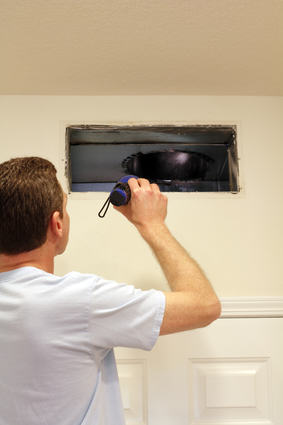 The indoor air quality of your home is the result of the interaction between the building site, climate, building system, construction techniques, contaminant sources, and building occupants. Sources that contaminate the quality of your indoor air may originate within the building or may be drawn in from outdoors. Here are some of the factors that might be affecting the indoor air quality of your home:
The indoor air quality of your home is the result of the interaction between the building site, climate, building system, construction techniques, contaminant sources, and building occupants. Sources that contaminate the quality of your indoor air may originate within the building or may be drawn in from outdoors. Here are some of the factors that might be affecting the indoor air quality of your home:
- Contaminated Outdoor Air
Without a smart air filtration system, the air that is drawn in from outdoors can bring in a wide range of contaminating factors that will damage dramatically the quality of your breathing air. In this category, you can include pollen, fungal spores, industrial pollutants, vehicle exhaust, dust, odors from dumpsters, and more.
- Soil Gas Contamination
The soil around your home may be contaminated in many ways resulting in soil gases that can start affecting the quality of the air. Soil gas may be caused by radon, pesticides, or an underground leakage. For example, if your building is situated on a terrain that was previously used for landfills, that may be the cause of an underground leakage.
- Improperly Cleaned HVAC Systems
As effective and reliable as an air conditioning system may be, it can’t remain clean for years, so regular maintenance is a must and it often includes cleaning of the duct pipes, fans, blowers, humidifiers, as well as replacing the filter. Not only will you prolong the life of your A/C system, but you will also breathe cleaner air.
- Personal and Household Activities
Smoking and cooking are two sources of indoor air contamination. In addition, body and cosmetic odors also contribute to poor air quality in your home along with the cleaning materials you use. You should not neglect the emissions from all sorts of trash or stored supplies, or even the use of fragrances and deodorizers. Add the airborne dust that comes with sweeping or vacuuming and you will have a full collection of contaminating factors that can reduce the quality of the air you breathe.
- Chemicals Released From Buildings
After a building has been constructed, there are certain chemicals that continue to be released from building components and furnishings including volatile organic or inorganic compounds. Textured surfaces such as carpeting, curtains, and old furnishings can also contaminate your indoor air.
- Accidental Sources
The air quality can also be affected by factors that are not a permanent threat, but they occur accidently. These factors may include accidental spills, mold growth caused by flooding or excessive moisture, roof leaks, and fire damage.
You should also pay attention to emissions from new furnishings, dust and fibers from demolition, caulk, or any other microbiological emission released from remodeling activities.
- Water Damage
Water damage is a source of microbiological growth that is itself an air pollutant. Standing water from clogged drains is a major source as well along with dry traps that allow the passage of sewer gas.
Indoor air quality is very important for your health and that of your family. You can maintain good indoor air quality with the proper air purifiers and dehumidifiers and the proper maintenance of your heating and cooling system. Contact the professionals at Laird & Son for a free, no obligation estimate to start improving your air quality!